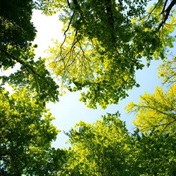Amid the highest recorded pollen counts in history, Health24 will be bringing you exclusive pollen count updates courtesy of the UCT Lung Institute's Allergy and Immunology Unit.
Here are the major city updates for 23 September:
Cape Town (Western Cape)
High tree pollen levels, moderate weed levels and low grass levels were detected at this site. The dominant tree pollens were cypress (Cupressaceae) and pine (Pinaceae), while significant counts for plane (Platanus sp.) and gum (Myrtaceae) were also seen.
Other tree pollen found included acacia (Acacia sp.), cedar (Cedrus sp.), hackberry (Celtis sp.), the pea family (Fabaceae), mulberry (Moraceae), olive (Oleaceae), yellowwood (Podocarpus sp.), poplar (Populus sp.), oak (Quercus sp.), karee (Rhus sp. / Searsia sp.), willow (Salix sp.) and elm (Ulmaceae).
The weed pollen detected were the daisy family (Asteraceae), the carnation family (Caryophyllaceae), sedges (Cyperaceae), goosefoot (Chenopodiaceae), erica (Ericaceae), spurges (Euphorbiaceae), protea (Proteaceae), knotweed (Polygonaceae), buttercups (Ranunculaceae), the rose family (Rosaceae), English plantain (Plantago sp.) and nettles (Urticaceae). Mould levels were low.
Count: 245 (very high)
Johannesburg (Gauteng)
High tree pollen levels were seen again during this sampling week as birch (Butulaceae), bushwillow (Combretaceae), cypress (Cupressaceae), Australian pine (Casuarina sp.), mulberry (Moraceae), ash (Fraxinus sp.), pine (Pinaceae), yellowwood (Podocarpaceae), plane (Platanaceae), oak (Quercus sp.) and karee (Rhus sp. / Searsia sp.) continued to flower. Plane, ash and mulberry dominated the pollen catch. Low weeds included the daisy family (Asteraceae), goosefoot (Chenopodiaceae), the carnation family (Caryophyllaceae) and erica (Ericaceae). Moulds and grasses were low.
Count: 72 (very high)
Pretoria (Gauteng)
Moderate tree counts and low grass and weed counts were detected. Tree pollen included significant levels of birch (Betulaceae), mulberry (Moraceae) and plane tree (Platanus sp.), with lower levels of hackberry (Celtis sp.), cypress (Cupressaceae), bushwillow (Combretaceae), coral tree (Erythrina sp.), ash (Fraxinus sp.), protea (Proteaceae), gum (Myrtaceae), pine (Pinaceae), yellowwood (Podocarpus sp.), poplar (Populus sp.), oak (Quercus sp.) and karee (Rhus sp. / Searsia sp.). The only weed pollen detected were from the carnation family (Caryophyllaceae) and spurges (Euphorbiaceae). Mould levels were low.
Count: 50 (high)
Bloemfontein (Orange Free State)
High tree pollen levels, moderate grass levels and low weed levels were seen. The dominant tree pollen types were from hackberry (Celtis sp.), mulberry (Moraceae), plane (Platanus sp.) and karee (Rhus sp. / Searsia sp.). Other abundant tree pollens were acacia (Acacia sp.), false olive (Buddleja sp.), cypress (Cupressaceae), waxberry (Morella sp.) and olive (Oleaceae), with low levels of pine (Pinus sp.) also seen. Weed pollen included only the daisy family (Asteraceae), goosefoot (Chenopodiaceae) and erica (Ericaceae). Mould levels were low.
Count: 165 (very high)
Kimberley (Northern Cape)
Tree, grass and weed pollen levels declined to low levels during this sampling period. Trees detected were oak (Quercus sp.), karee (Rhus sp. / Searsia sp.), hackberry (Celtis sp.), pine (Pinaceae), mulberry (Moraceae) and cypress (Cupressaceae). Weeds included the daisy family (Asteraceae), pellitory-of-the-wall (Parietaria sp.) and knotweed (Polygonaceae). Moulds were extremely low.
Count: 8 (moderate)
Durban (KZN)
Grass, tree and weed pollen levels were low during this sampling period. Tree pollen included acacia (Acacia sp.), the sumac family (Anacardiaceae), cypress (Cupressaceae), mulberry (Moraceae), plane (Platanaceae), pine (Pinaceae), Australian pine (Casuarina sp.), hackberry (Celtis sp.), bushwillow (Combretaceae), cypress (Cupressaceae), mulberry (Moraceae), gum (Myrtaceae), olive (Oleaceae), plane (Platanus sp.), yellowwood (Podocarpaceae) and oak (Quercus sp.). The weed pollen detected were erica (Ericaceae), spurges (Euphorbia sp.), fern spores (Polypodiaceae), knotweed (Polygonaceae), sorrel (Rumex sp.) and nettles (Urticaceae). Mould counts were low.
Count: 14 (moderate)
Gqeberha (Eastern Cape)
Grass, tree, weed and mould levels were all low during this week. Trees detected included acacia (Acacia sp.), Australian pine (Casuarina sp.), cedar (Cedrus sp.), cypress (Cupressaceae), waxberry (Morella sp.), gum (Myrtaceae), olive (Oleaceae) and pine (Pinaceae). Weeds detected were sedges (Cyperaceae), the daisy family (Asteraceae), mugwort (Artemisia sp.), katstert (Anthospermum sp.), the carnation family (Caryophyllaceae), spurges (Euphorbiaceae) and erica/heather (Ericaceae). Moulds were low.
Count: 3 (low)
See the full report HERE.
Reference ranges:
Overall, Trees, Grasses and Weeds all use the same values (grains per cubic metres of air)
Overall count is the daily average of pollen grains per cubic metres of air (trees plus grasses plus weeds).
In partnership with the the UCT Lung Institute's Allergy and Immunology Unit.




 Publications
Publications
 Partners
Partners












